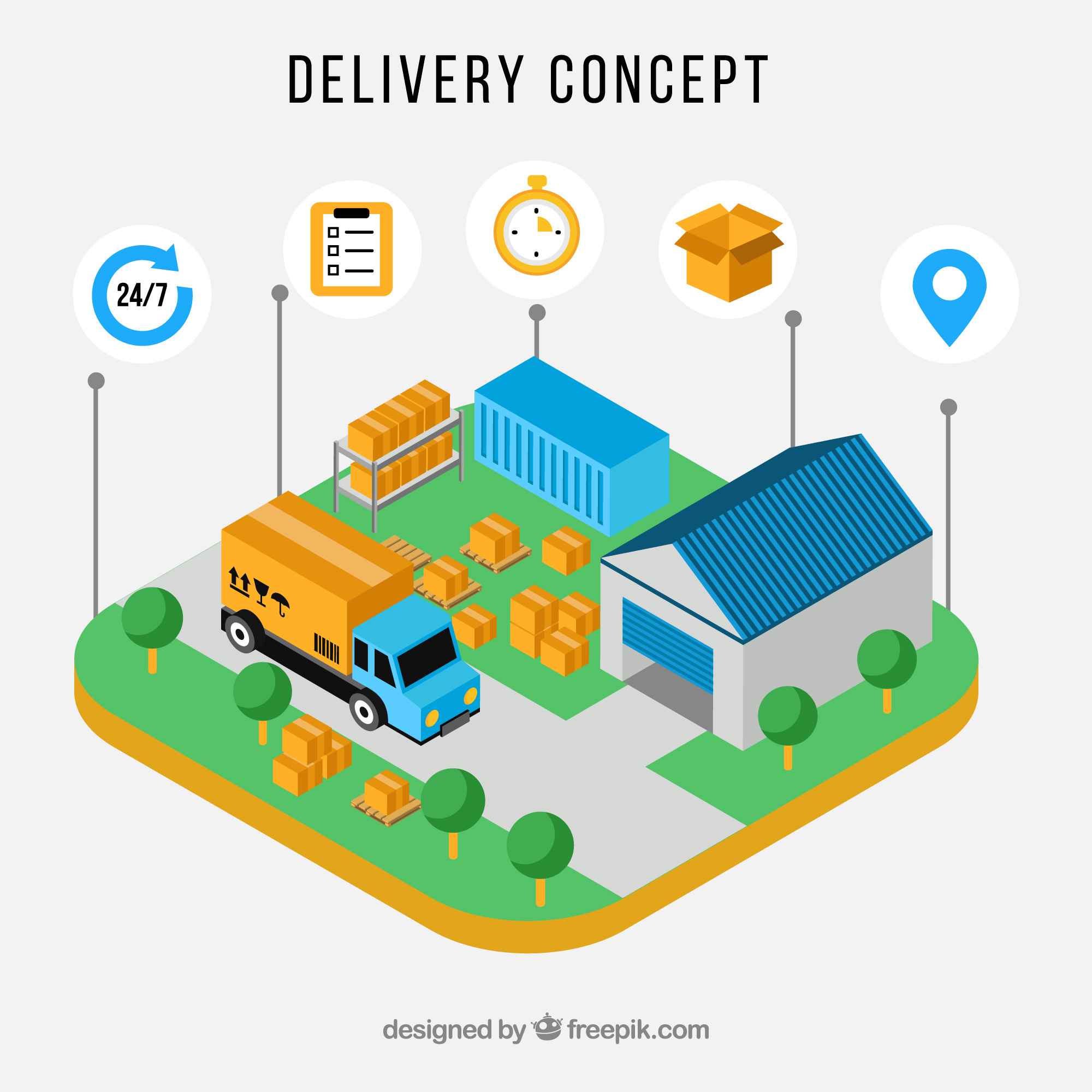In today’s fast-paced logistics and e-commerce landscape, the need for a reliable Delivery Management System (DMS) has become more vital than ever. With the rapid increase in online shopping, companies are under pressure to deliver packages efficiently while managing complex supply chains. A well-implemented best delivery management system can streamline these operations, leading to better customer satisfaction and lower operational costs. However, implementing such a system comes with its fair share of challenges. In this article, we’ll explore these challenges and how businesses can overcome them to ensure smooth and successful implementation.
Understanding a Delivery Management System
Before we dive into the challenges, let’s first understand what a Delivery Management System entails.
A Delivery Management System is a software solution that automates and streamlines the process of delivering goods from a business to its customers. It typically includes features like:
- Route Optimization: Ensuring the most efficient delivery routes.
- Real-Time Tracking: Monitoring drivers and deliveries in real-time.
- Delivery Scheduling: Automating delivery times and improving dispatch operations.
- Proof of Delivery (POD): Digital receipts to confirm delivery.
Now that we know what a DMS is, let’s take a closer look at the common obstacles businesses face when trying to implement one.
Challenges in Implementing a Delivery Management System
1. High Initial Costs
Implementing a new DMS often requires a significant investment. Between the cost of the software, hardware, and potential consultants, businesses—especially small and medium enterprises (SMEs)—may find it challenging to justify the expenditure upfront.
2. Integration with Existing Systems
Many companies already have established systems in place for logistics, warehousing, or customer service. Integrating a DMS with these legacy systems can be difficult, leading to compatibility issues, data silos, and disrupted workflows.
3.Employee Resistance and Training
Introducing any new technology in the workplace often meets resistance. Employees may be reluctant to learn new processes or fear that the new system will complicate their jobs. Additionally, adequate training must be provided, which can be time-consuming and costly.
4. Scalability Issues
Some DMS platforms are not designed with future growth in mind. As a company expands its delivery operations, it may face limitations in system capacity, making it difficult to manage larger volumes of deliveries efficiently.
5. Real-Time Data Accuracy
Many businesses rely on real-time data to track deliveries, monitor inventory, and manage driver routes. However, ensuring that this data is accurate and up-to-date can be a significant challenge, particularly if there are gaps in communication between the system and field agents.
6. Compliance with Local Regulations
Depending on where a business operates, it must comply with various transportation, labor, and environmental regulations. Ensuring that the DMS adheres to these rules can be a daunting task, particularly in countries with complex legal frameworks.
7. Lack of Customization
Not all DMS solutions are created equal, and some may lack the flexibility that businesses need to tailor the system to their specific operational requirements. A rigid system can hinder business growth rather than support it.
8. Managing Customer Expectations
Customers today expect fast, transparent, and reliable delivery services. A DMS that fails to provide real-time tracking or proof of delivery can leave customers feeling frustrated, potentially harming the company’s reputation.
9. Cybersecurity and Data Privacy Concerns
With any system that handles customer data, there are inherent risks related to cybersecurity and data privacy. Implementing a DMS means handling sensitive information like customer addresses, payment details, and delivery schedules—making the system a potential target for hackers.
Overcoming the Challenges of Implementing a Delivery Management System
1. High Initial Costs
While the upfront investment can seem daunting, businesses can alleviate the financial burden by adopting a phased approach. Start small, perhaps by implementing the system in a single department or region, and scale up over time as the benefits become evident. Leasing options and SaaS (Software-as-a-Service) solutions can also reduce capital expenditure.
2. Integration with Existing Systems
Integration issues can be minimized by selecting a DMS that offers API (Application Programming Interface) compatibility. APIs act as a bridge between different software platforms, allowing smooth data exchange and synchronization.
3. Employee Resistance and Training
The best way to counter employee resistance is through clear communication and education. Involve key staff in the selection process and provide comprehensive training to ensure they understand the benefits of the system. Hands-on training and ongoing support will boost confidence and foster adoption.
4. Scalability Issues
Choose a DMS that is scalable from the start. Cloud-based systems are often more flexible and can easily accommodate growing delivery volumes without needing costly upgrades or reconfigurations.
5. Real-Time Data Accuracy
Leverage technologies like the Internet of Things (IoT) and Artificial Intelligence (AI) to improve data accuracy. These technologies can help automate data collection and reduce human error, ensuring more reliable real-time information.
6. Compliance with Local Regulations
To navigate the complex regulatory landscape, businesses should work closely with legal advisors or consultants who are familiar with local laws. Regular audits and compliance checks should be a part of the DMS implementation process.
7. Lack of Customization
Ensure that the DMS provider offers customization options. If necessary, choose a provider that can build a tailored solution that aligns with your specific business requirements, rather than settling for a one-size-fits-all approach.
8. Managing Customer Expectations
Implement features like real-time tracking and automated notifications to keep customers informed throughout the delivery process. Transparent communication goes a long way in managing expectations and maintaining trust.
9. Cybersecurity and Data Privacy Concerns
Adopt robust cybersecurity measures, including encryption, multi-factor authentication, and regular system audits. Make sure your DMS complies with data privacy regulations like GDPR or CCPA to protect both your company and your customers.
Future Trends in Delivery Management Systems
The logistics and delivery management industry is undergoing rapid transformation, driven by advancements in technology and shifting consumer demands. Key trends include the integration of AI and machine learning, automation in logistics, and a growing emphasis on sustainability. Let’s explore these trends in detail.
1. Role of AI and Machine Learning in Delivery Management Systems
AI and machine learning (ML) are revolutionizing delivery management by optimizing every stage of the supply chain and logistics process, from route planning to demand forecasting. Their impact is expected to grow in the following ways:
- Predictive Analytics and Demand Forecasting: Machine learning models can analyze historical data to predict demand spikes, allowing businesses to optimize inventory and resource allocation. This reduces overstocking or stockouts, leading to efficient delivery timelines.
- Dynamic Route Optimization: AI-powered delivery management systems can analyze real-time traffic, weather, and road conditions to recommend the fastest and most efficient delivery routes. This leads to reduced delivery times, lower fuel consumption, and better resource management.
- Autonomous Delivery Drones & Vehicles: Machine learning is crucial for the development of autonomous vehicles and drones that could handle deliveries in the future. These systems rely on ML for navigation, obstacle avoidance, and situational awareness.
- Personalized Customer Experience: AI can analyze customer preferences and patterns to offer personalized delivery options. It can optimize delivery windows, recommend alternate drop-off points, and communicate with customers in real time about delivery statuses.
- Smart Inventory Management: AI-driven systems can track inventory levels in real-time, predicting when stock needs replenishment and optimizing warehouse management, reducing the manual effort required for managing goods and improving delivery timelines.
2. Automation in Logistics
Automation is a key driver of efficiency and cost reduction in logistics and delivery management. Automated systems handle repetitive tasks with high precision, reducing human error and enabling faster delivery processes.
- Warehouse Automation: Warehouses are increasingly adopting robots to move goods, sort packages, and even handle picking and packing. Amazon’s fulfillment centers, for example, utilize robotics and conveyor belts to speed up the process. The rise of “dark warehouses,” which operate entirely with robots and no human intervention, is an emerging trend.
- Robotic Process Automation (RPA): RPA is used to automate administrative tasks such as order processing, invoicing, and customer service operations. It helps in improving accuracy and reducing processing times.
- Self-Driving Delivery Vehicles: Autonomous trucks and delivery vehicles are becoming a reality, with companies like Tesla and Waymo leading the way in developing self-driving technology. These vehicles promise faster, more efficient, and cost-effective delivery, especially in long-haul freight.
- Drone Deliveries: Companies like Amazon and Zipline are testing drone deliveries, particularly for smaller packages. Drones can overcome road traffic, reduce delivery times, and provide cost-effective solutions for delivering to remote areas.
3. Growing Importance of Sustainability
With increasing awareness about climate change and the environmental impact of logistics, sustainability is becoming a top priority in delivery management systems. Companies are adopting eco-friendly practices to minimize their carbon footprint and meet regulatory demands.
- Electric Vehicles (EVs): The adoption of electric delivery vans and trucks is rising rapidly. Companies like UPS, FedEx, and DHL are investing in electric fleets to reduce emissions. Governments are also incentivizing the shift to EVs through subsidies and low-emission zones in urban areas.
- Route Optimization for Fuel Efficiency: AI and machine learning are used to calculate the most fuel-efficient delivery routes. This reduces fuel consumption, operating costs, and carbon emissions.
- Sustainable Packaging: Companies are moving toward using recyclable, reusable, or biodegradable packaging materials to reduce waste. Lightweight packaging also helps in reducing fuel consumption by making deliveries lighter.
- Carbon Offsetting: Some logistics companies are adopting carbon offset programs where they invest in environmental projects to neutralize their carbon footprint. For example, DHL has a GoGreen initiative that allows customers to opt for carbon-neutral shipping.
- Urban Delivery Hubs and Micro Warehousing: To minimize long-distance transportation, businesses are investing in urban warehouses, bringing storage closer to customers. This “last-mile” approach reduces both delivery times and emissions by shortening the distance between distribution points and the end customer.
Conclusion
Implementing a Delivery Management System comes with several challenges, from high costs to integration issues and employee resistance. However, by addressing these obstacles head-on with strategic planning and the right tools, businesses can reap the many benefits of a DMS, including improved efficiency, enhanced customer satisfaction, and reduced operational costs. As technology continues to evolve, DMS solutions will only become more powerful and essential in the logistics world.
FAQs
1. What is a Delivery Management System?
A Delivery Management System is a software solution designed to streamline and automate the delivery process, including route optimization, tracking, and proof of delivery.
2. How long does it take to implement a DMS?
The implementation timeline can vary depending on the complexity of the system and the size of the business, but it typically takes between 3 to 6 months.
3. Can small businesses benefit from a DMS?
Yes, small businesses can significantly benefit from a DMS by improving efficiency, reducing delivery errors, and enhancing customer satisfaction.
4. What are the common risks during DMS implementation?
Common risks include high upfront costs, technical integration issues, and employee resistance. These can be mitigated with proper planning and phased implementation.
5. How can a DMS improve customer satisfaction?
A DMS provides real-time tracking, faster deliveries, and better communication, leading to a smoother customer experience and higher satisfaction levels.


